Ekos Polar Alignment Fix
After poor results trying out Ekos' Polar Alignment helper module the other night I spent a little time looking over the indilib and Ekos source code.
To recap, last session I noticed Ekos was failing to wait for the scope to stop slewing before taking the 2nd polar alignment image resulting in variations of:
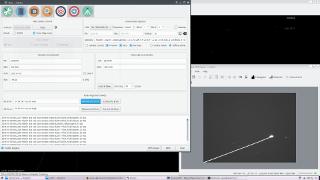
Ekos failing to wait for slew to end.
Indilib
Digging into the indilib code showed Ekos should wait for the scope slew command to return a given value indicating the scope has completed the slew before taking the next image. This was not working.
Connecting via minicom to the LX90 (RS232 serial interface to the autostar) and manually issuing a slew then running the same query as Ekos to determine the scopes state showed the LX90 was returning 0x7F 0x23 which is a non-printable character followed by a “#”. After slew completes only 0x23 is returned.
After finding the Meade Autostar protocol manual, this confirmed the suspicion that Ekos was looking for a “#” to indicate still slewing rather than slew complete.
Quite a simple fix in the end and has also been fixed in the official Ekos repository. All that remains is to test the fix under the night sky.
Clear Skies
The “new gear cloud curse” apparently doesn’t apply to software changes :) With a clear night a few days after the Ekos fix I had the opportunity to put it all to the test.
Polar alignment error reporting was now consistent and gradually I closed in on a better Polar alignment. After getting within a reported error of ~20 arcseconds in either axis, further adjustments did not seem to result in much change and I fear I made the polar alignment gradually worse again. I’m not sure what went wrong but there was still quite a bit of drift in DEC, more so than under 20 arcseconds would imply. Something to investigate another night. For future sessions I think I’ll return to drift alignment as it removes inaccuracy in the RA drive from the equation.
Guiding
Target wise I returned once more to M27, this time trying both 180s and 120s exposures.
To show how much of a difference guiding makes, the following are two single 180 second exposures with and without guiding enabled.
Cropped 180s guided exposure Cropped 180s unguided exposure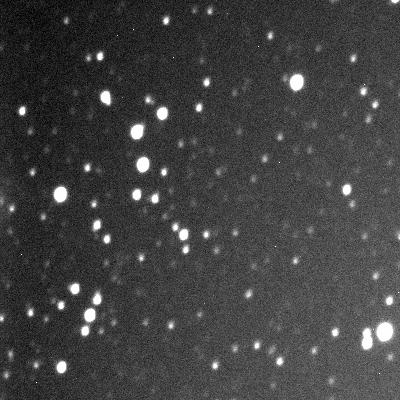
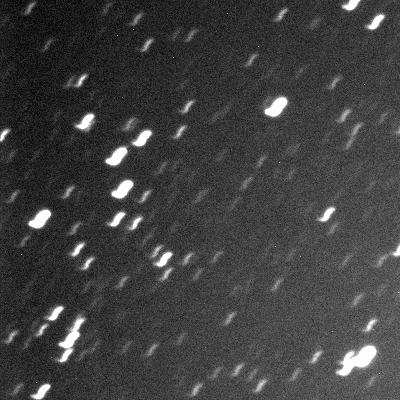
Even with the guided exposure there’s a bulging to the stars showing the inaccuracy of my polar alignment but the difference between guided and unguided is obvious.
M42
Next up was M42 and M74 to see how guiding worked in other parts of the sky. I’m not sure why but after a band of cloud passed overhead, guiding failed to calibrate/work on these targets. Slewing back to M27 guiding also failed to calibrate. Regardless I decided to take a variety of exposures for future reference and accept a little bulging due to the less accurate polar alignment and lack of RA guiding.
I’ve not yet got around to properly processing all of the nights images yet as I’m learning my way around the trial version of PixInsight for Linux (highly recommend checking out the light vortex astronomy tutorials if you use PixInsight). Depending on how they turn out, I’ll make a new post, in the mean time here’s a quick processing of M42 and a cropped version from 2014 to compare against.
M42 10x15s and 40x30s. October 2016 M42 from 2014.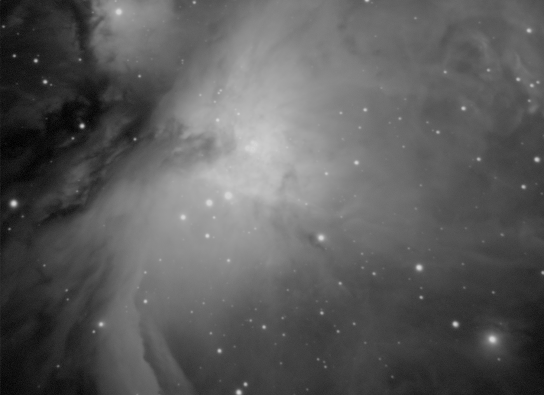
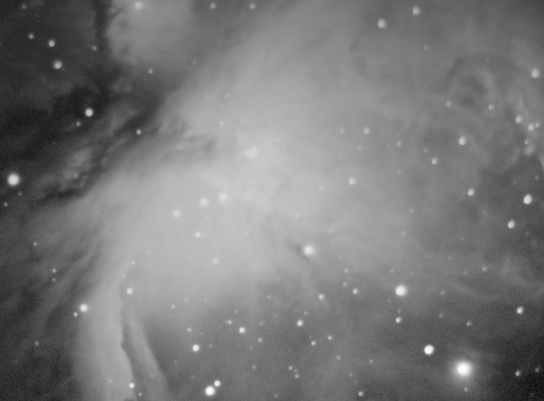
The 2014 version was taken at f3.3 so I’ve cropped the original image to roughly the same fov as the 2016 f6.3 image. The newer image shows less star distortion, focus has improved although still not yet good enough and there’s a bit more detail in the faint parts of the nebula. My processing skills need a lot more work as the core is still blown out. I’ve some shorter duration exposures which could help with that once I learn my way around PixInsight a little more.
Considering the iffy polar alignment (notice a trend?) for the night, I’m quite pleased with how much could be salvaged. With a better drift alignment and working RA guiding I’m sure I’ll be able to improve on this object, perhaps significantly so if I spend more time on processing.
Future Sessions
The goal for my next imaging session is to really nail drift alignment with somewhere from 5-10 mins of no visible star drift. This should allow me to then eliminate polar alignment as a source of any issues that night. Hopefully I’ll be able to focus more on the guiding options in Ekos and narrow down where the remaining star bulging is coming from.
Prior to the next session I intend to run through a full scope setup indoors and find a better balance for the scope when loaded with imaging gear. I feel this contributed to the poor guiding in DEC (even though I shouldn’t need to DEC guide). There’s also some potential slop in the imaging train due to the spacer I’m using between focal reducer and filter wheel. I’m planning to switch to a zero image shift focuser before too long though, so the spacer will remain for now.
